The Biden administration has sought to portray its botched Afghanistan withdrawal as a success, citing the evacuation of over 124,000 people in 16 days.
However, the harrowing first few days of the evacuation showed how little advance planning there was as the Taliban closed in on the capital.
According to several firsthand witnesses, the ensuing panic and chaos created a disaster zone at the Kabul airport that American troops had to gain control of, and in the process, witness war crimes and other human tragedy.

US soldiers stand guard behind barbed wire as Afghans sit on a roadside near the military part of the airport in Kabul. (WAKIL KOHSAR/AFP via Getty Images).
One witness called it “trying to build the airplane while we’re flying.”
As the Taliban advanced on Kabul, the Pentagon began mobilizing forces for a non-combatant evacuation operation (NEO) on August 12.
U.S. Ambassador to Afghanistan Ross Wilson finally triggered the NEO on Saturday, August 14 (Washington time).
Panic ensued at the embassy. The U.S. embassy’s database had to be remotely wiped as employees on the ground in Kabul escaped. Some embassy staff fled without an extra change of clothes or shoes to the Kabul airport, where they stayed for the next two weeks.
An Afghan American who advised four four-star U.S. generals as a GS-15 U.S. government employee with a security clearance was in Afghanistan visiting his sick mother and received no notice from the embassy.
“The embassy didn’t even bother to call me to tell me, ‘Hey…you need to go to this gate.’ … Nobody. No one, the embassy line was not working. There was no embassy,” he told Breitbart News in a recent interview.
Instead, his brother called him on the morning of August 15 (Kabul time) to tell him that the Taliban had entered Kabul.
He had arrived in Afghanistan on August 4 and had a return ticket to the U.S. for September 1. He knew there was fighting in the south and the southeast and that it would probably spread. “But not that quick,” he said.
He called a friend at a travel agency and told him to get him any ticket out of Afghanistan. He booked a flight for later that evening at 7 p.m.
It was bumper-to-bumper traffic to get to the airport. He was stopped by the Taliban multiple times but got through. At the airport, it was chaos. Afghan officials were also trying to get out. He was told Afghan President Ashraf Ghani was there, too.
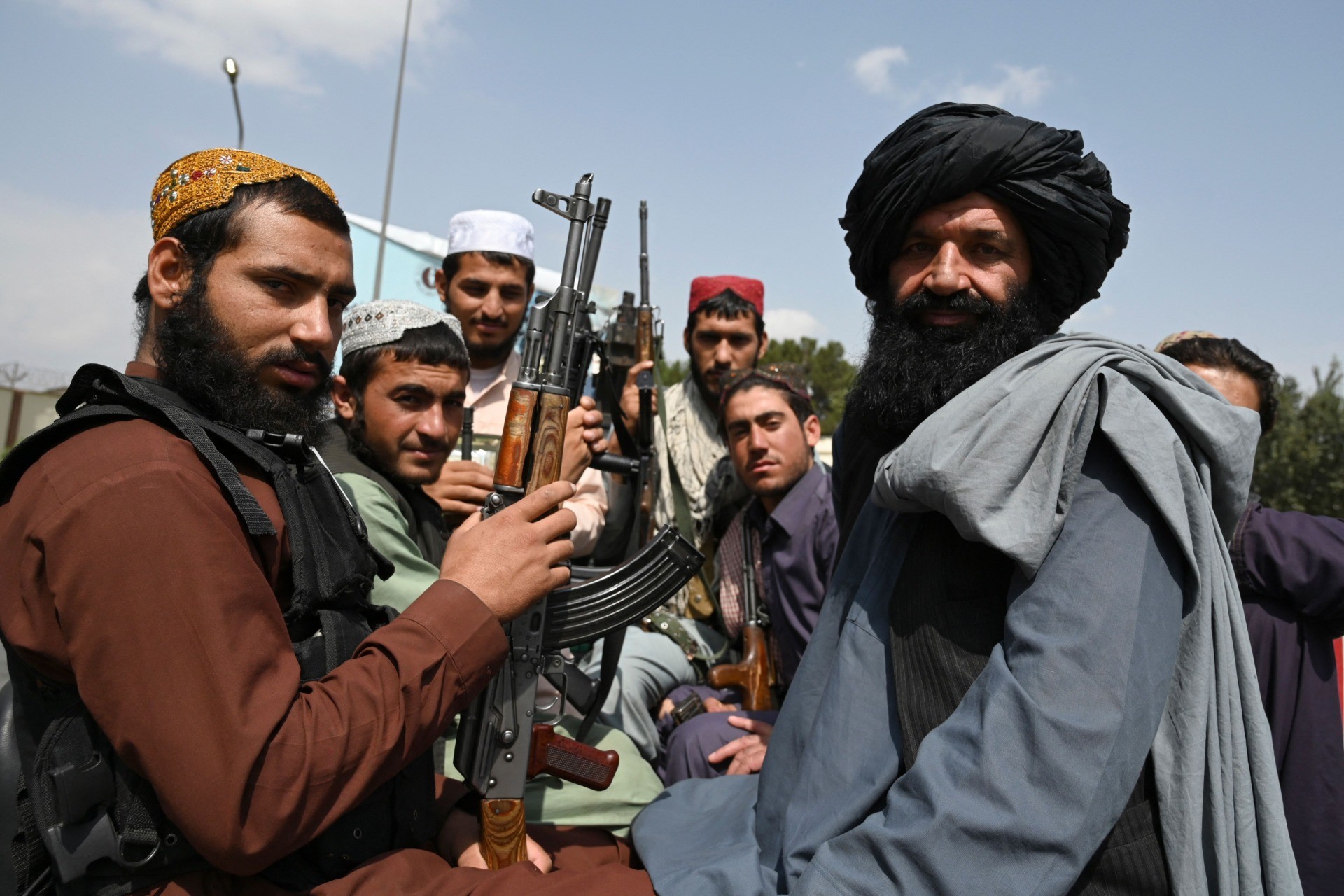
Taliban fighters sit on the back of a pick-up truck at the airport in Kabul. (WAKIL KOHSAR/AFP via Getty Images).
He asked an airport worker about his flight. The worker responded, “Fuck your trip. The regime has changed.”
Airport employees abandoned their posts and Afghan security forces began shedding their uniforms.
“The people didn’t know what to do. There was no control. The airport was completely open. There was no security left. Everybody took off their uniform. They were scared. And you could see one, two Taliban inside as well,” he said.
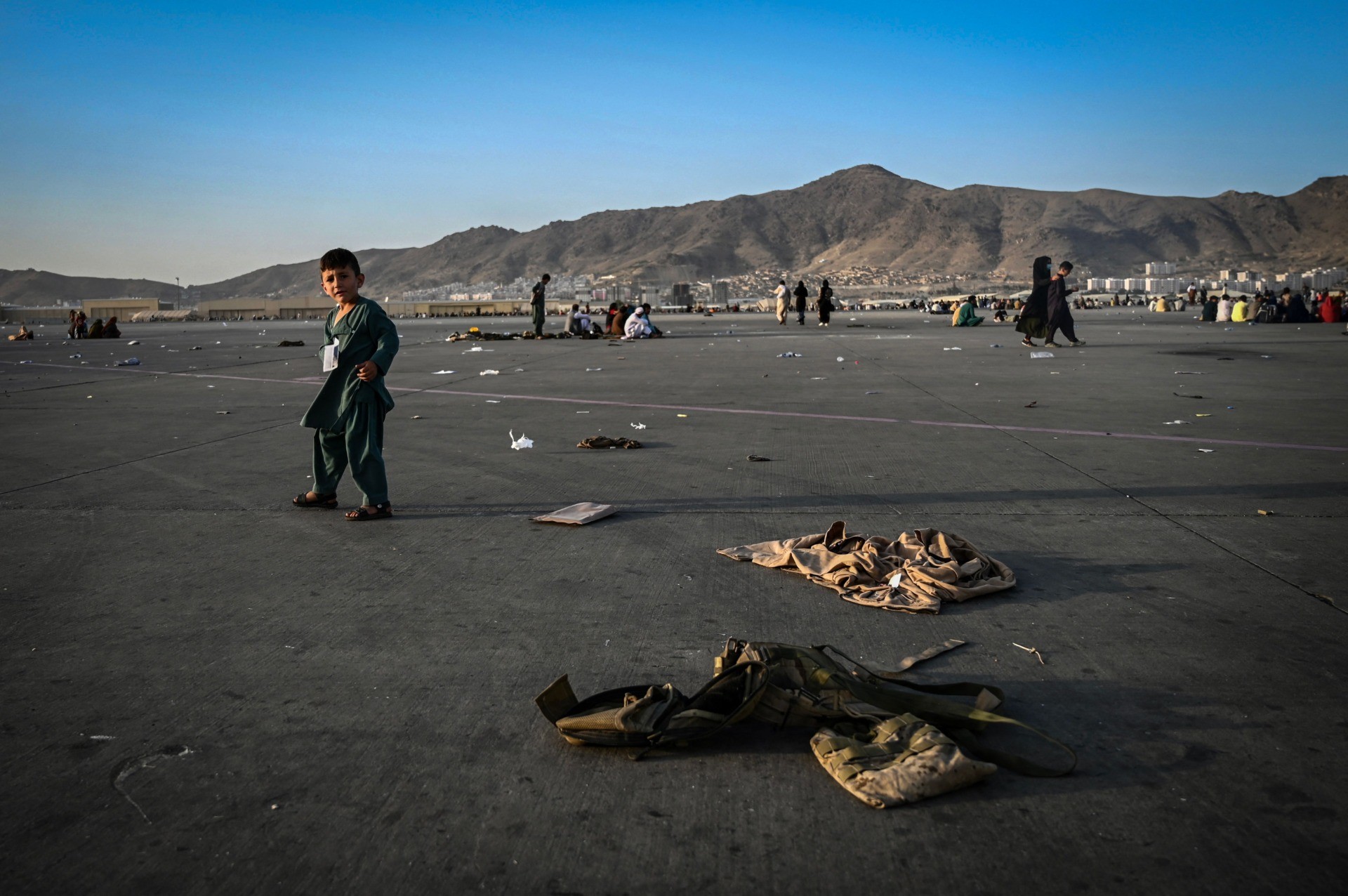
An Afghan child walks near military uniforms at the airport in Kabul. (WAKIL KOHSAR/AFP via Getty Images).
After word spread that Ghani had fled Afghanistan, thousands of Afghans rushed to the airport — many without tickets. “They came straight in and they didn’t give a shit. And they just went straight to the airplane … we were left behind,” he said.
“There was chaos, there was fighting,” he said. “I told my brother, I said, ‘This is a place that I swear, somebody shoot you, nobody will take responsibility.'”

Afghan people climb atop a plane as they wait at the Kabul airport. (WAKIL KOHSAR/AFP via Getty Images).
With his flight gone, he decided to leave the airport and come back the next morning.
In the meantime, Marines from the 24th Marine Expeditionary Unit and the Special Purpose Marine Air Ground Task Force — Central Command and soldiers from the 82nd Airborne Division in Fort Bragg were making their way to the Kabul airport.
Some forces en route to Kuwait before the NEO were rerouted to the Kabul airport. They had little idea of what they would be met with, let alone how to navigate the massive airfield.
When they arrived, they found U.S. embassy employees and their private security contractors fleeing, often leaving mounds of equipment on the tarmac, which later had to be collected and destroyed.
The embassy employees did not even have time to brief arriving troops on the airfield they had to assume control over, or even give them a map of the airfield.
“They were like, ‘Hey man, we’re out of here, we’re on the next planes out.’ Like, ‘Here’s our command center where the [closed-circuit TVs] are, there’s guns in all the towers, we’re gonna leave them for you guys and, uh, good luck,'” according to a U.S. servicemember who spoke to Breitbart News on the condition of anonymity.
There were members of the disbanded Afghan Air Force at the airfield, who did not know what to do. “They just got told, ‘Hey, you don’t exist anymore.’ … They got on everything they knew how to fly and just took off,” the service member said.
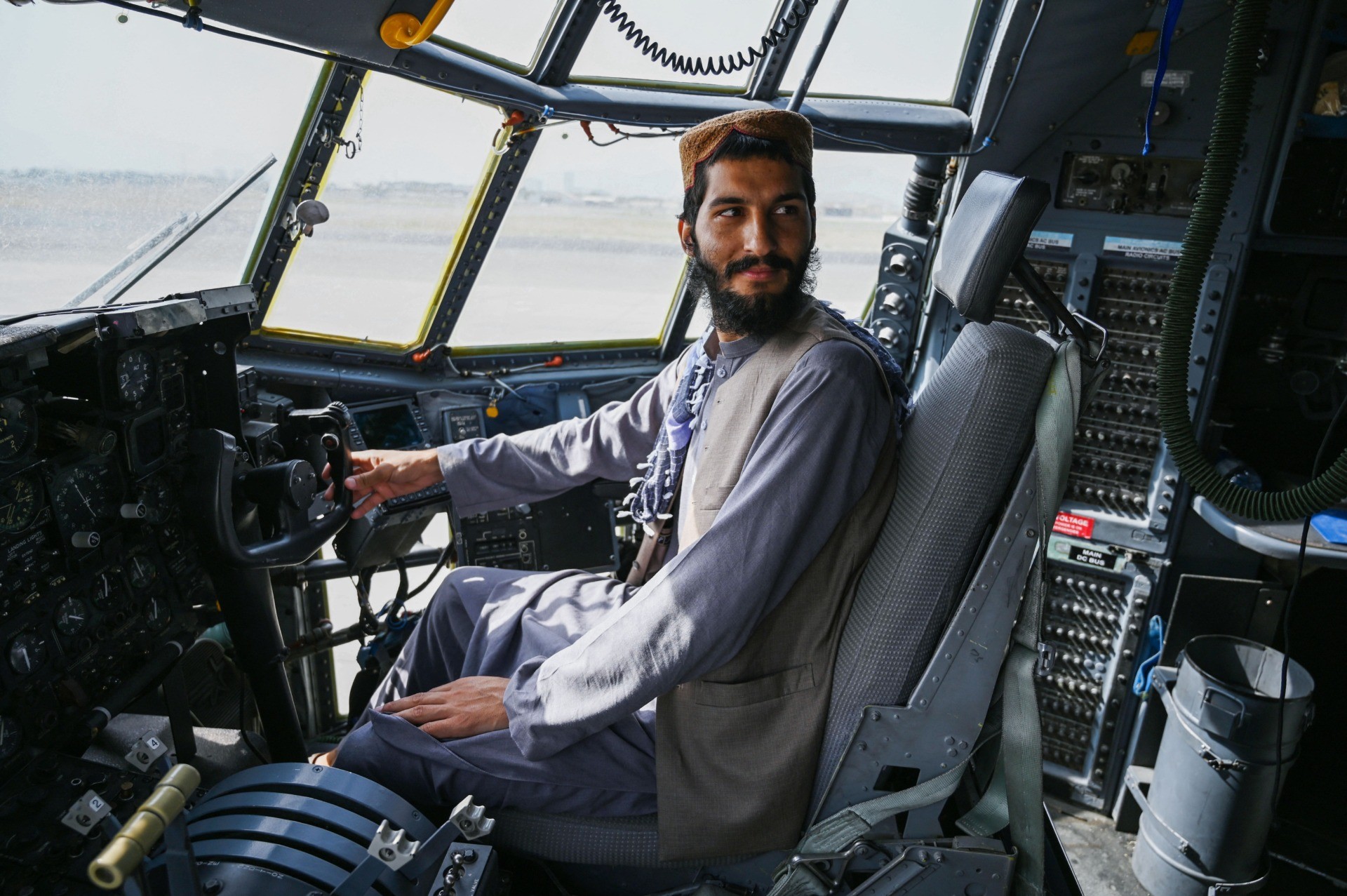
A Taliban fighter sits in the cockpit of an Afghan Air Force aircraft at the airport in Kabul. (WAKIL KOHSAR/AFP via Getty Images).
Afghan security forces also abandoned thousands of guns and munitions at the airport. “There’s just guns laying everywhere and RPGs, AT4 [rocket launchers], grenades, machine guns, rifles, pistols, explosives, et cetera,” he said.
Some of the grenades had their pins pulled with masking tape around the spoon. U.S. forces began collecting all the abandoned gear and weapons and rendering them safe.
Meanwhile the crowds of Afghans were steadily growing throughout the night of August 15 and early morning of August 16 (Kabul time). Afghan security forces manning airport gates had abandoned their positions.

This handout image shows U.S. Soldiers and Marines assist with security at an Evacuation Control Checkpoint during an evacuation at Hamid Karzai International Airport. (Staff Sgt. Victor Mancilla / U.S. Marine Corps via Getty Images).
“When they left the Mongolian horde just kind of flowed through,” the service member said. There were fewer than 1,000 U.S. troops to guard the airport’s four-and-a-half mile perimeter.
By early afternoon on August 16 (Kabul time), thousands of Afghans were on the airfield, trying to scramble aboard any aircraft they could. Troops said it reminded them of the zombie horde in the movie “World War Z.”
Some were former members of the Afghan National Army and their families. Some brought their guns onboard, delaying flights as countries refused to receive them.
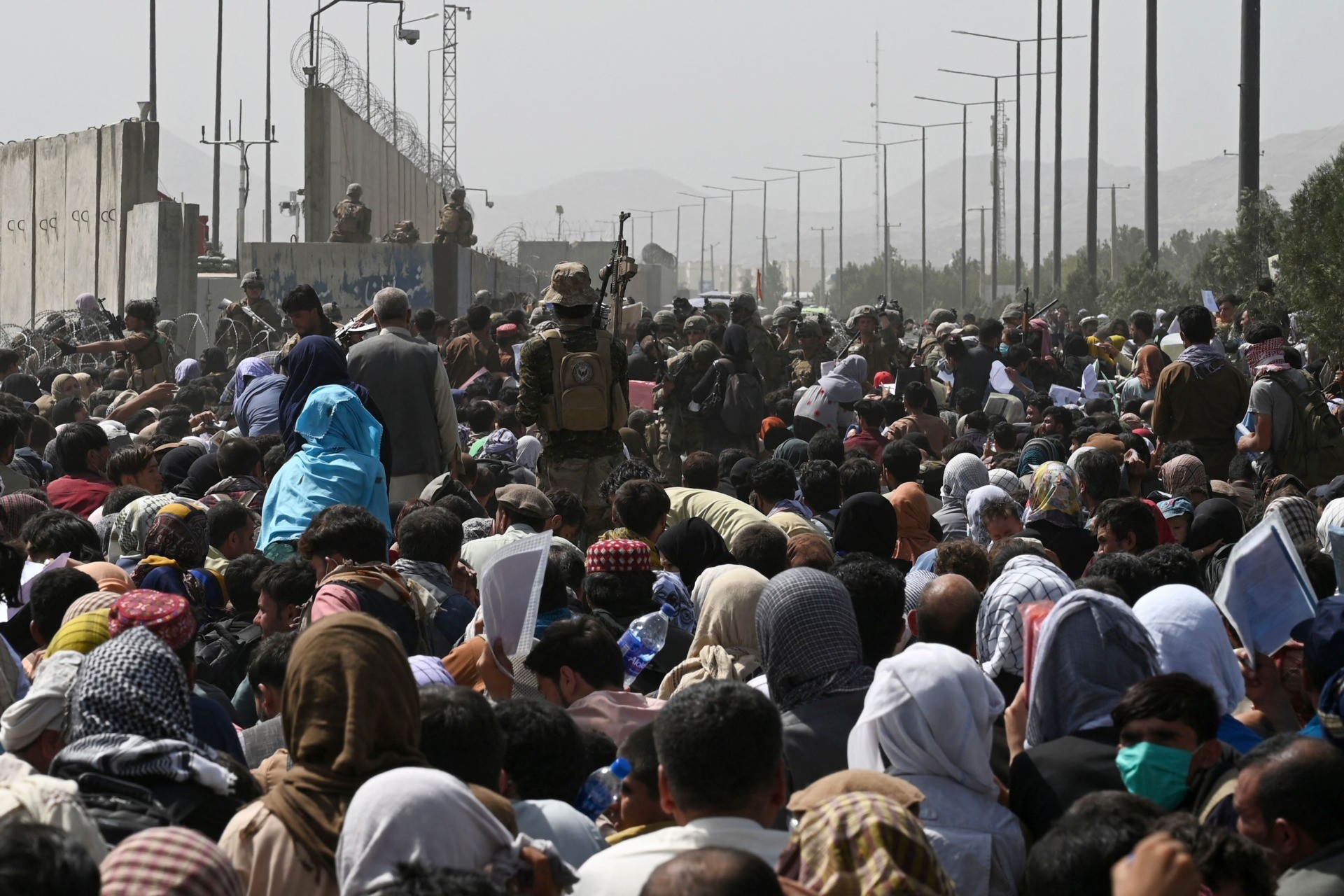
Afghans gather on a roadside near the military part of the airport in Kabul on August 20, 2021, hoping to flee from the country after the Taliban’s military takeover of Afghanistan. (WAKIL KOHSAR/AFP via Getty Images).
“They decided, ‘Oh, well, I’m going to take my AK with me. So when they got to Qatar … the [military police] were screening them again and … finding guns and stuff,” the service member said.
The U.S. military tried to use Apaches to disperse some of the people flooding onto the runways.
It was around this time that hundreds of Afghans tried to chase after a departing C-17. About a dozen Afghans died, including those who fell from the skies while clinging onto the aircraft and others who were trampled.
Around the same time, U.S. and Turkish forces — who were previously in charge of airport security — fired warning shots to try to clear the runways. At least one Afghan man was accidentally injured by a U.S. service member firing a warning shot. The man later died of his injuries.
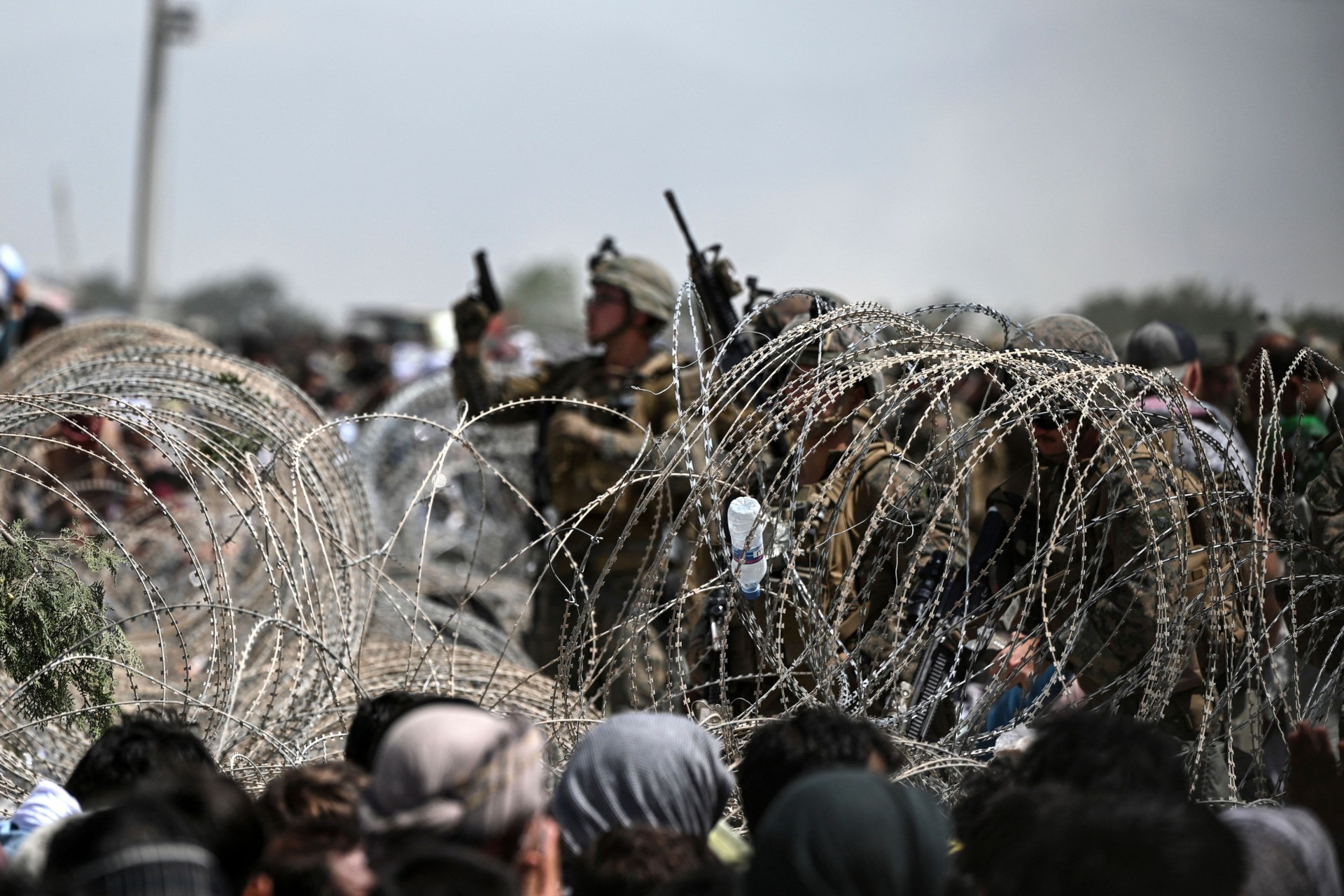
A US soldier shoots in the air with his pistol while standing guard behind barbed wire as Afghans sit on a roadside near the military part of the airport in Kabul on August 20, 2021, hoping to flee from the country after the Taliban’s military takeover of Afghanistan. (WAKIL KOHSAR/AFP via Getty Images).
The Turkish troops took a harsher approach. Near a low wall in the airport’s perimeter where Afghans were crawling over into the airport, Turkish forces opened machine gun fire onto Afghan civilians, including women and children, killing about 10 to 20. They then ran over their bodies in their armored vehicles.
American forces were stunned. They fired warning shots at the Turkish forces to get them to stop.
“We ran over there. We were on foot, we ran over there as fast as we could, uh, and basically flagged them down. We’re like, ‘Hey, what the fuck were you doing?’ And the Turkish commander there was like, ‘Eh, it is what it is. Nobody cares.'”
Although the State Department was responsible for the last-minute call for a NEO, triggering the hasty escape, the military was not perfectly prepared either.

Secretary of State Antony Blinken questioned about the Biden administration’s handling of the U.S. withdraw from Afghanistan. (Jabin Botsford/Pool via AP).
For example, U.S. military interpreters were in very short supply. According to the servicemember, there were less than a handful of interpreters for the first few days, until more troops showed up who could speak Dari or Pashto. Later, Afghan special forces, known as the National Security Unit, who showed up to help with perimeter security and could speak English helped also.
And one U.S. servicemember ended up in Kabul by accident. Since he was not vaccinated, he was not supposed to be deployed.
“I don’t know how he got all the way to Afghanistan because he wasn’t supposed to be deployable. He’s not vaccinated…but he showed up and he was on the ground four and a half hours,” the service member said.
“I guess when the button got pushed…a little bit of panic set in and we’re like, ‘We need everybody here now.’ … As with anything, 20/20 hindsight, everything could have been better organized.”
He added, “A hundred percent [we] should have been there two weeks earlier. We could’ve had time to actually do like a left-seat, right-seat with the security that was already in place, knowing where everything was, had everything set up and organized and instead of trying to build the airplane while we’re flying.”
“When we first went in, we were told we were going to help evacuate the embassy and pull security for the embassy evacuation,” he said. “We’re like, ‘We’re going to be here for 96 hours tops.’ Sixteen days later, I was finally getting on to C-17. I was like, man, that was horrible. It was the longest 96 hours ever.”
This is the first in a series of stories on the NEO.
Follow Breitbart News’s Kristina Wong on Twitter or on Facebook.

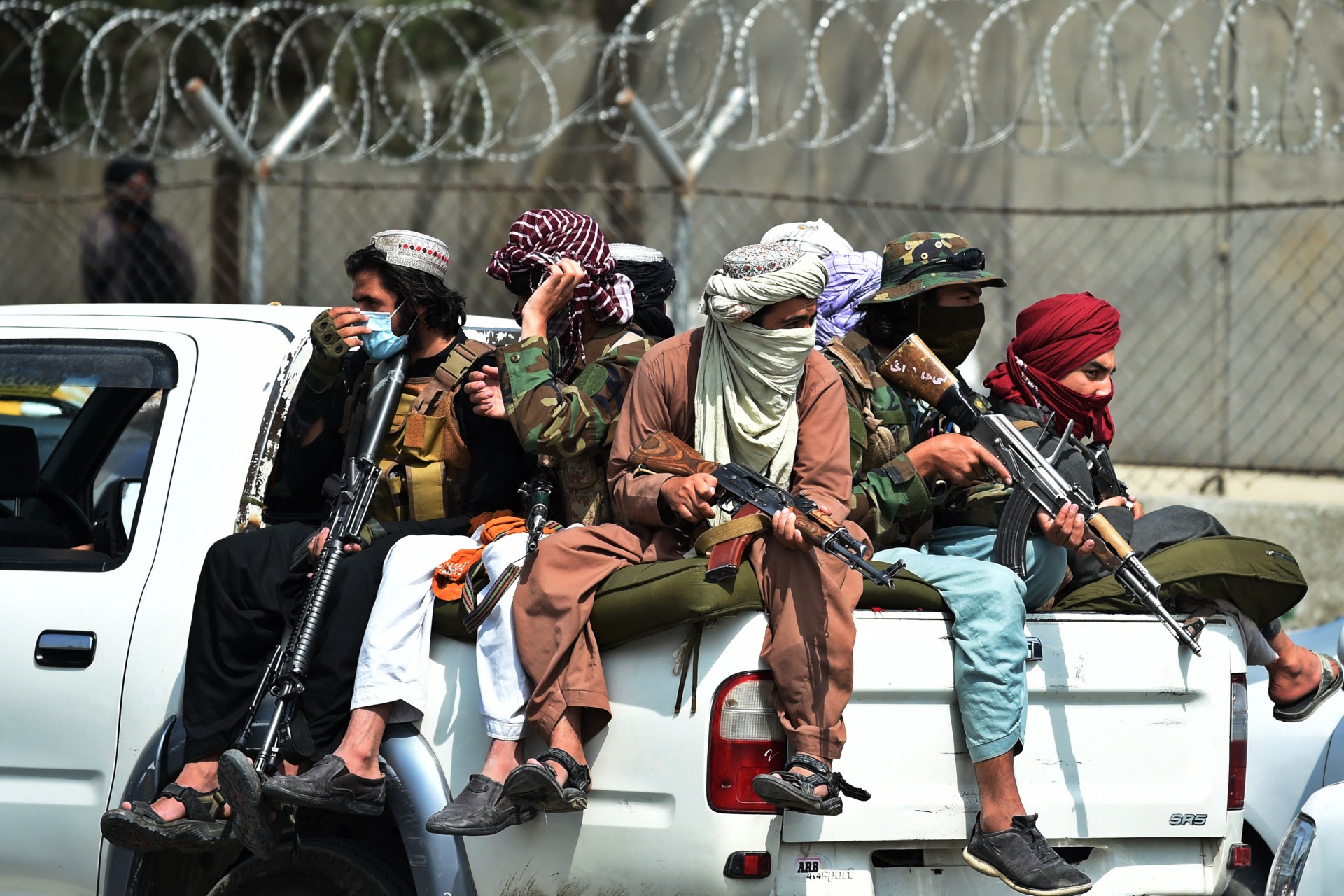

COMMENTS
Please let us know if you're having issues with commenting.